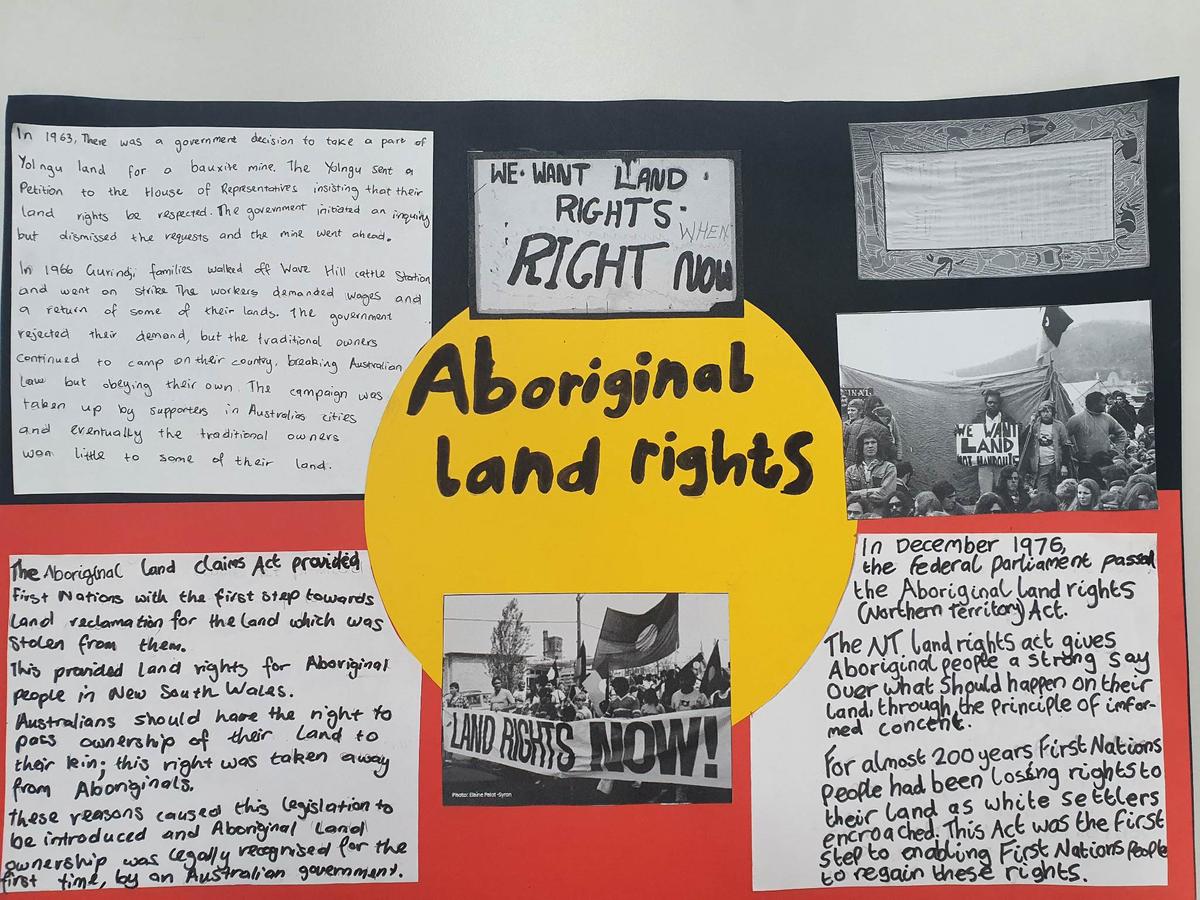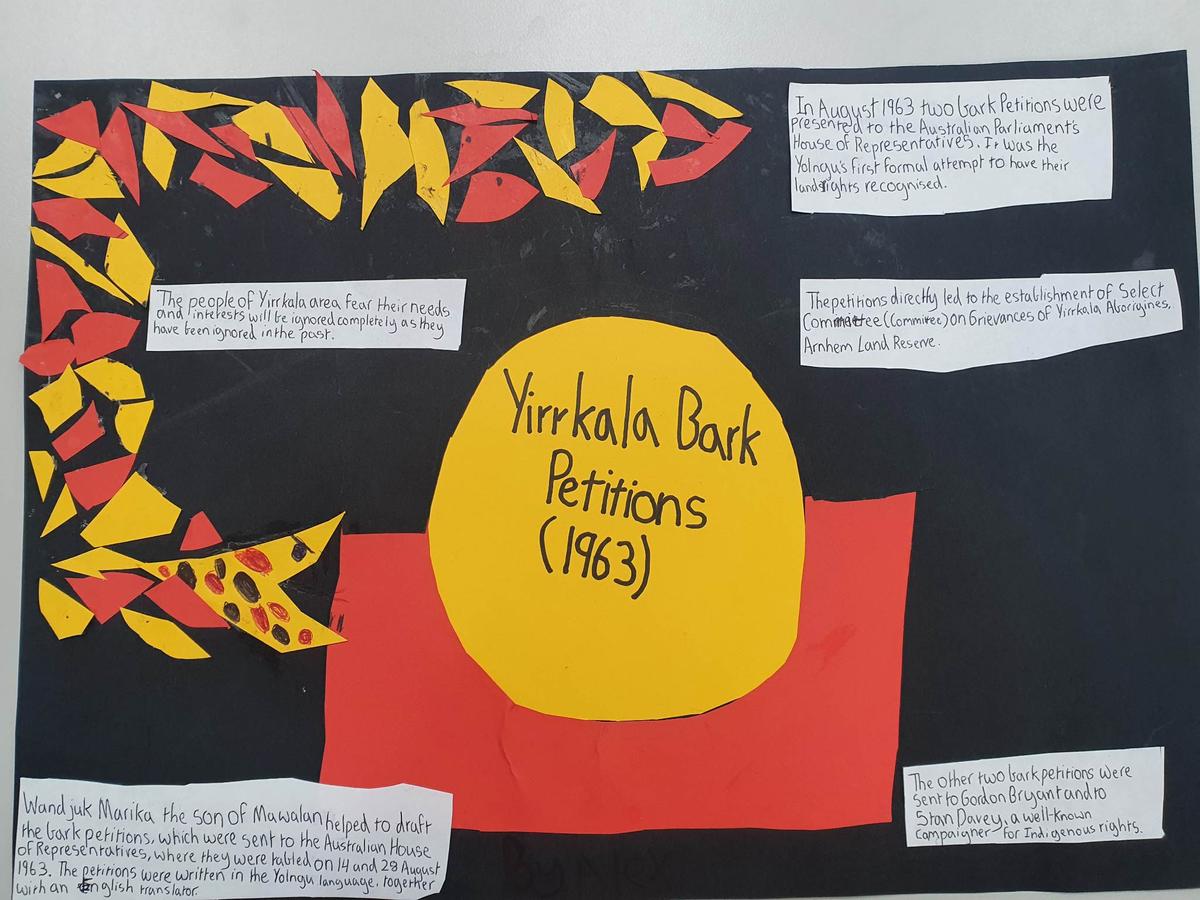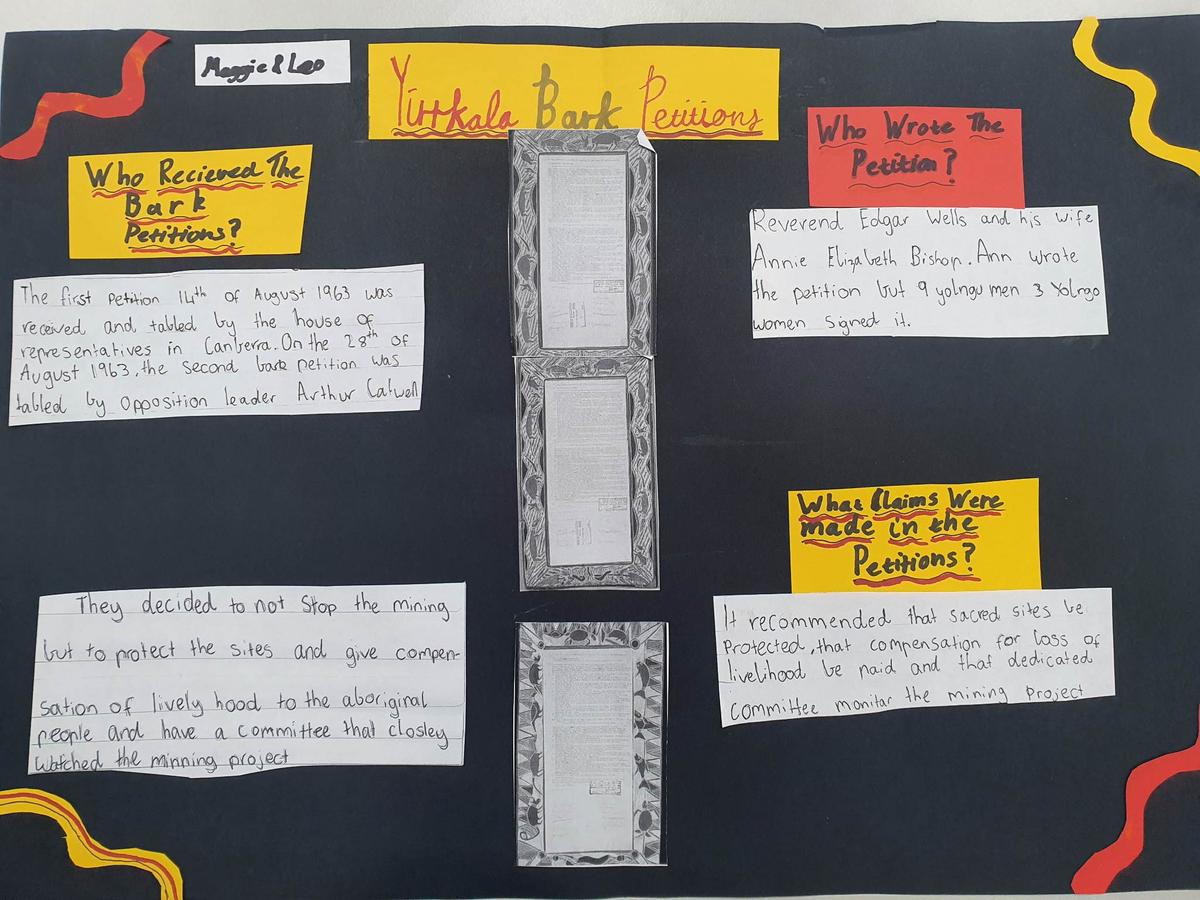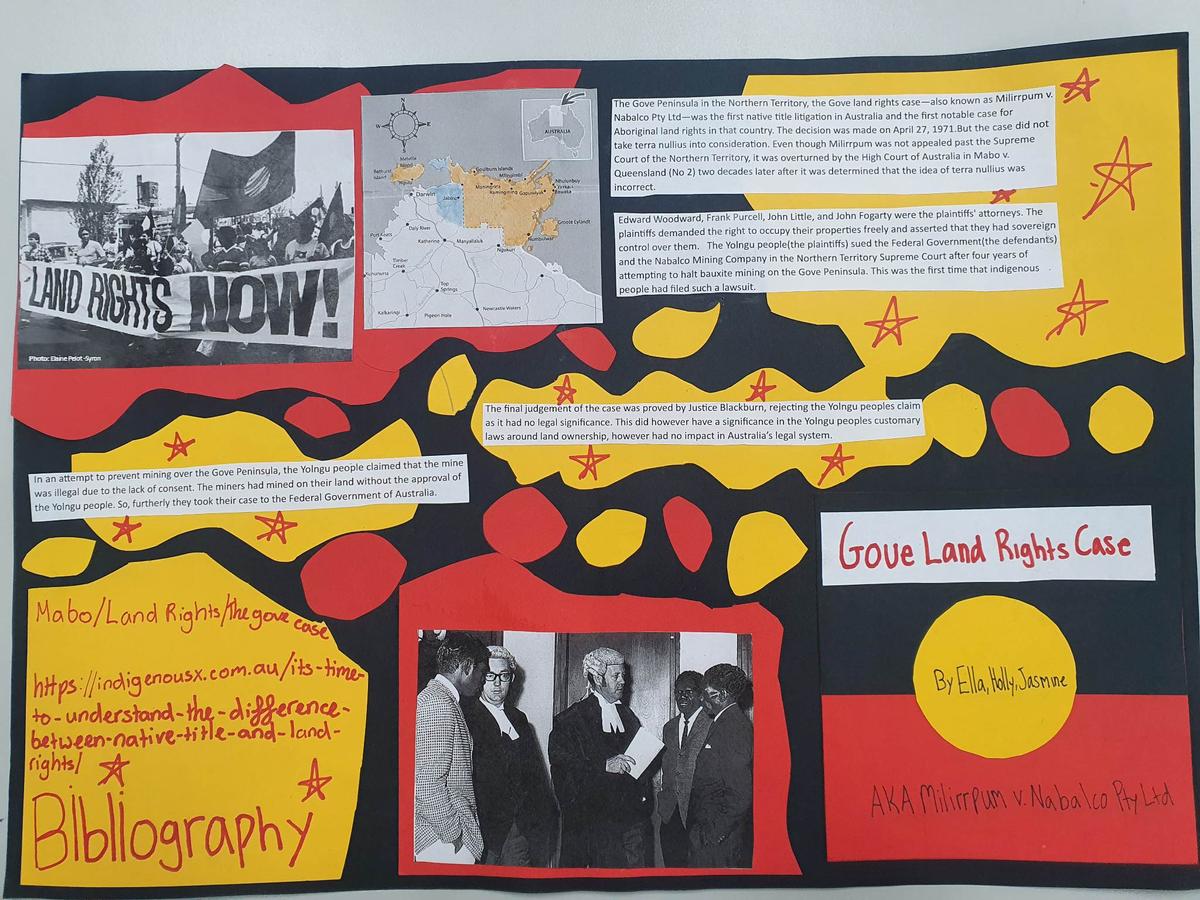Great Australian Legal Cases
Year 9/10

Great Australian Legal Cases
Year 9/10
Our Year 9/10 Great Australian Legal Cases class conducted a mini-investigation into some of the Land Rights actions that pre-date the Mabo Case to help them understand the significant legal hurdles and long standing precedents that have made it so difficult for legal land rights to be granted to Aboriginal people. See examples below of student posters that help share information to educate others about how slow change can occur. Students chose from the following topics:
Yirrkala Bark Petitions (1963) - a series of petitions from the Yolngu people to the Commonwealth government. They are seen as the first documents that joined Indigenous Lore with Commonwealth Law as the petitions are the first traditional documents to have been recognised by the Commonwealth Parliament. In 1963 on the 13th of March the Commonwealth government stole over 300 square kilometres of land from the Arnhem land reserve so that they could grant mining leases for bauxite mining - a rock with a high aluminium content. This was done without consultation with the traditional custodians.
Wave Hill Walk Off (1966) - On 23 August 1966, 200 Gurindji stockmen, domestic workers and their families initiated strike action at Wave Hill station in the Northern Territory. Negotiations with the station owners, the international food company Vestey Brothers, broke down, leading to a seven-year dispute. This eventually led to the return of a portion of their homelands to the Gurindji people in 1974, and the passing of the first legislation that allowed for First Nations peoples to claim land title if they could prove a traditional relationship to the country.
Gove Land Rights Case (1971) - In 1971, the Yolgnu people again petitioned the government in the Milirrpum v Nabalco Pty Ltd land rights case, commonly known as the Gove land rights case. The Northern Territory Supreme Court acknowledged the Yolgnu people’s ongoing relationship with the land and their complex system of laws to govern the land. However, the case ended with the court rejecting the claim because the Yolgnu people’s relationship to the land didn’t fit the European concept of ‘property’.
Land Rights Act (1976) - The Australian Government started purchasing privately owned land for the benefit of Indigenous communities and allow certain Crown land to be made available for claim. The Aboriginal Land Rights (Northern Territory) Act 1976 has resulted in almost 50 per cent of the Northern Territory being returned to Aboriginal peoples. Some state governments followed the lead of the Australian Government and introduced their own land rights legislation. But, there were significant limitations placed on the lands that were returned or could be claimed.








The 3rd of June marks the anniversary of the historic Mabo Case decision, where the High Court overturned the long held and false legal principle of Terra Nullius. The class are just starting to learn about the man, Eddie Koiki Mabo, after whom the case is named, to understand where his persistence and determination to challenge the legal principle that denied his people ownership of their traditional lands. His successful claim paved the way for new legislation to be passed by the Commonwealth Government, the Native Title Act 1993 to help regulate the processes used by Aboriginal people to claim Native Title over Crown land.
Always was and will always be Aboriginal land.
Sources:
Wave Hill Walk-Off | National Museum of Australia (nma.gov.au)
Yirrkala Bark Petitions signed - Deadly Story
Tanya Moran
Leader of Humanities